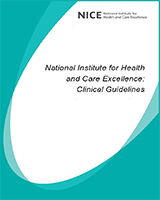From: Chapter 9, Community nursing

NCBI Bookshelf. A service of the National Library of Medicine, National Institutes of Health.
| Review question | Alternatives to acute care in hospital |
|---|---|
| Guideline condition and its definition | Acute Medical Emergencies. Definition: A medical emergency can arise in anyone, for example, in people: without a previously diagnosed medical condition, with an acute exacerbation of underlying chronic illness, after surgery, after trauma. |
| Objectives | To determine if wider provision of community-based intermediate care prevents people from staying in hospitals longer than necessary while not impacting on patient and carer outcomes. |
| Review population | Adults and young people (16 years and over) with a suspected or confirmed AME or patients at risk of AME. |
|
Adults (17 years and above). Young people (aged 16-17 years). | |
| Line of therapy not an inclusion criterion. | |
|
Interventions and comparators: generic/class; specific/drug (All interventions will be compared with each other, unless otherwise stated) |
Community matron or Nurse-led care. Hospital-based care/services. Usual Care. |
| Outcomes |
|
| Study design | Systematic reviews (SRs) of RCTs, RCTs, observational studies only to be included if no relevant SRs or RCTs are identified. |
| Unit of randomisation | Patient. |
| Crossover study | Permitted. |
| Minimum duration of study | Not defined. |
| Population stratification |
Early discharge. Admission avoidance. |
| Reasons for stratification | Each of them targets a separate outcome: early discharge would be primarily aimed at reducing length of stay, while admission avoidance would be primarily aimed at reducing hospital admission. Also, the population would be different as the admission avoidance group could be managed at home for the whole episode of care (they could be cared for at home from the start) while the early discharge group needs to be “stabilised” at hospital first then discharged. |
| Subgroup analyses if there is heterogeneity |
|
| Search criteria |
Databases: Medline, Embase, the Cochrane Library, CINAHL. Date limits for search: No date limits. Language: English only. |
From: Chapter 9, Community nursing

NCBI Bookshelf. A service of the National Library of Medicine, National Institutes of Health.